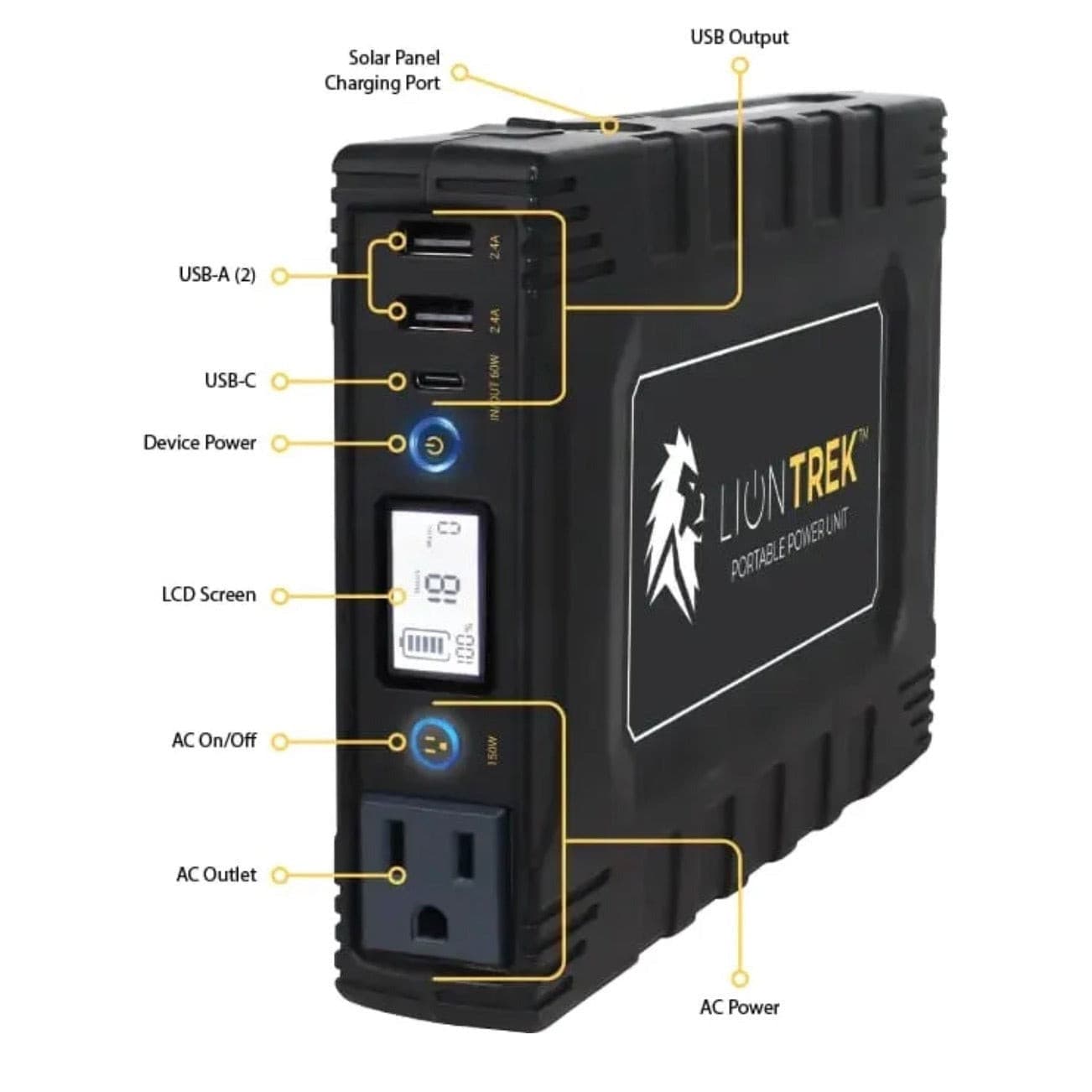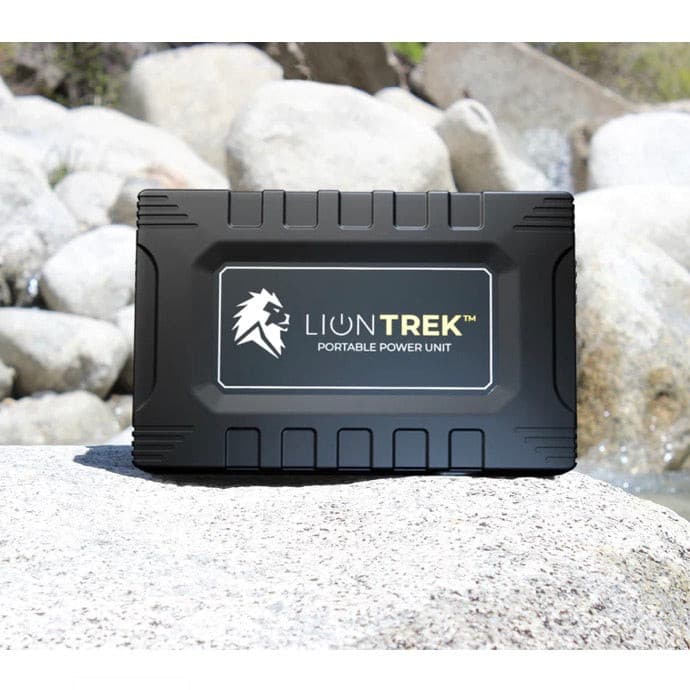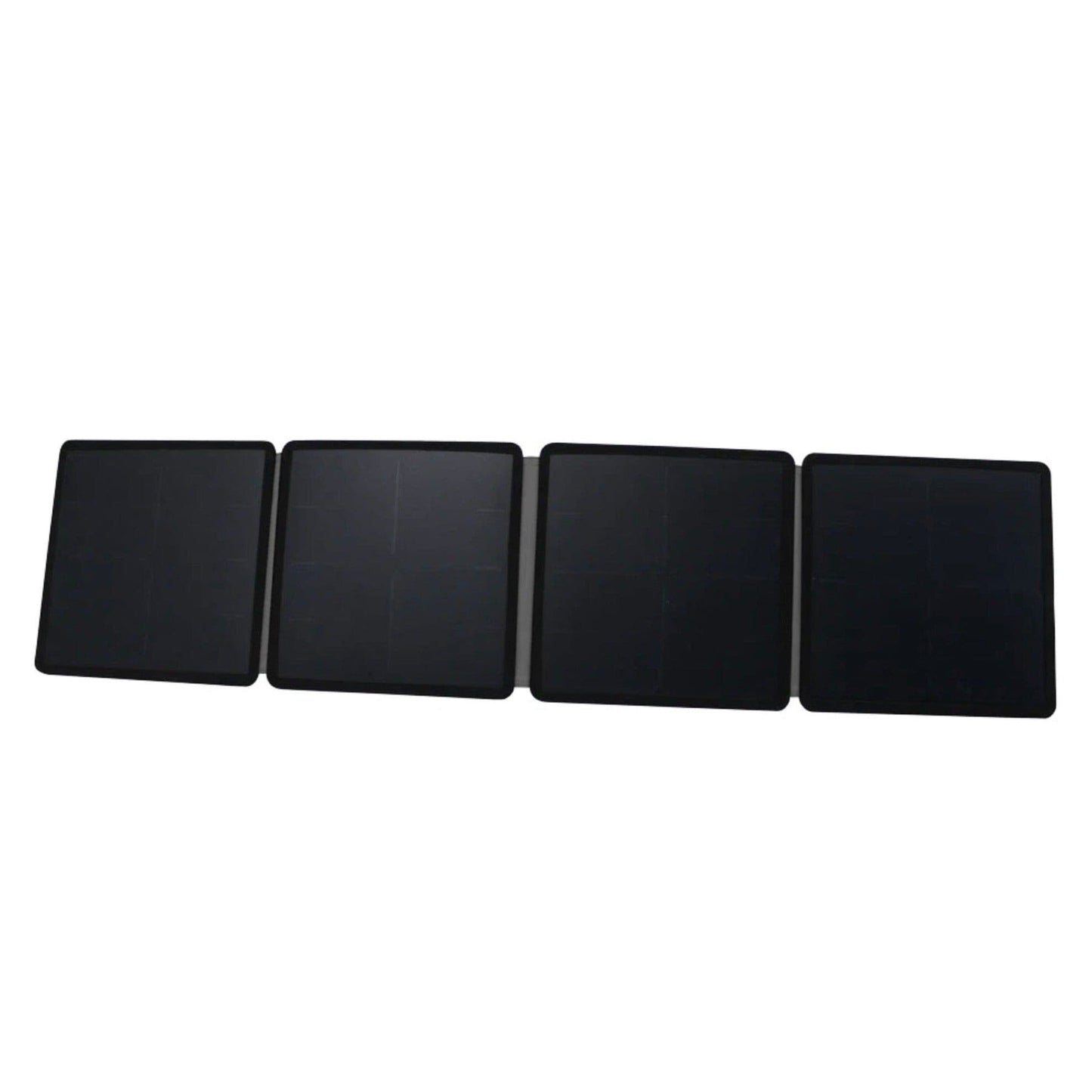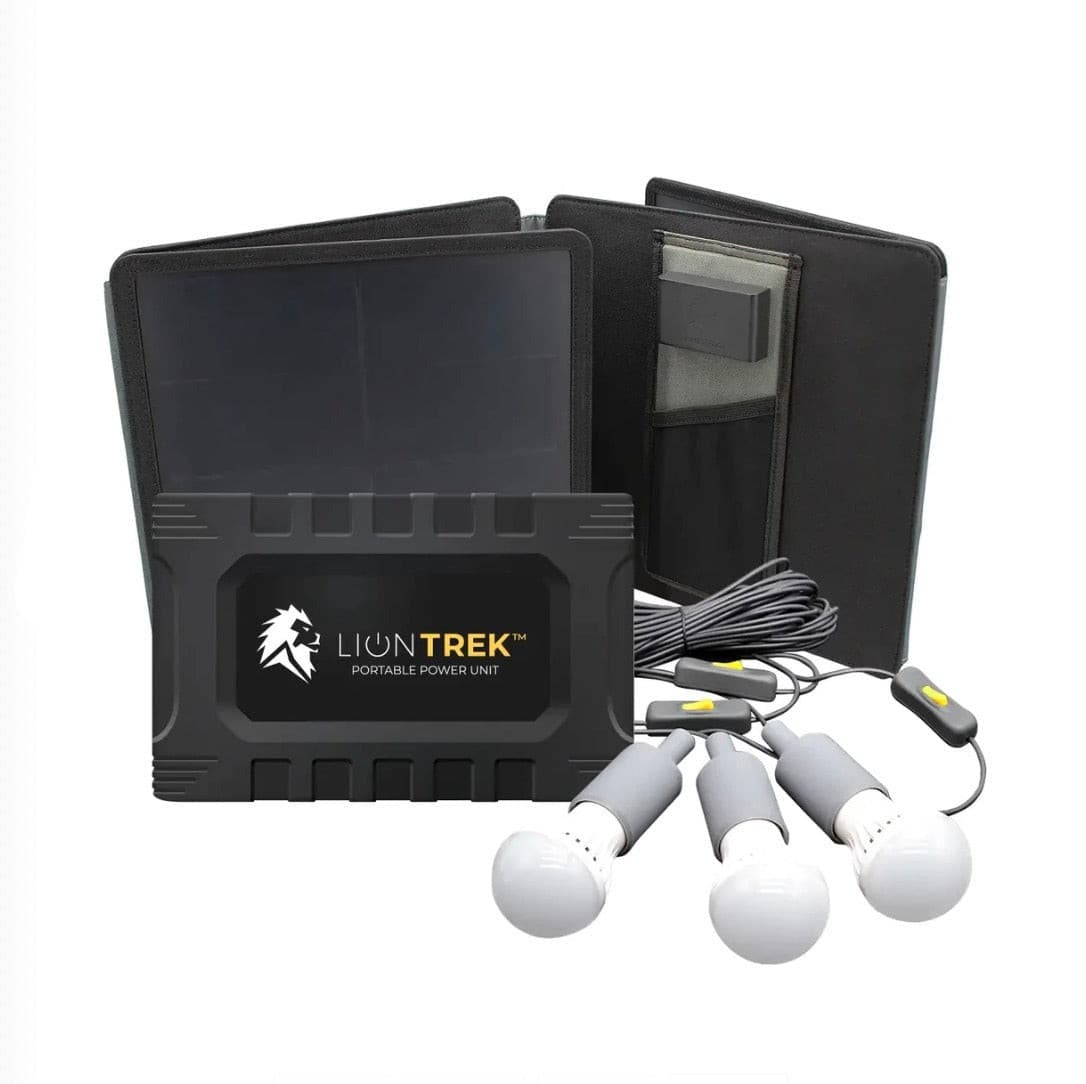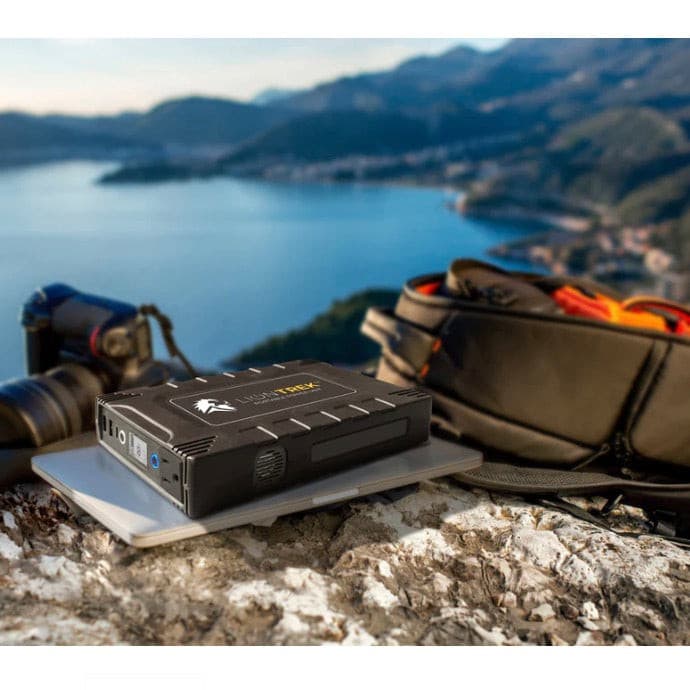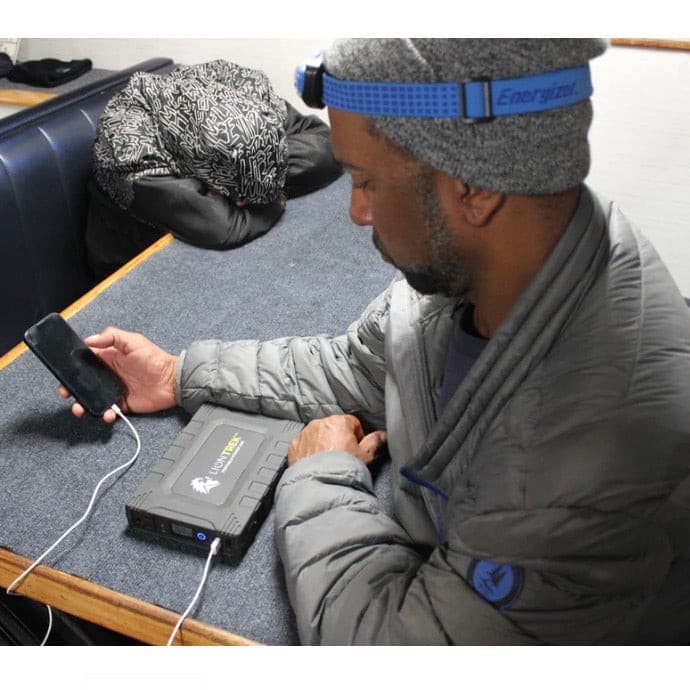Keep your adventures going with all the power you need
Lion Energy
Lion Energy| Trek LiFePO4, 99.9Wh, 150W AC Portable Solar Generator Kit
Lion Energy| Trek LiFePO4, 99.9Wh, 150W AC Portable Solar Generator Kit
Couldn't load pickup availability
Trek LiFePO4, 99.9Wh, 150W AC Power Station
The Lion Trek is our smallest portable solar power generator that has an AC outlet and has up to 150W of output. Plug in anything from laptops, lamps, cameras, phones, and even TVs. Keep projects going with all the power you need. The Trek has the most portable power you can take with you on an airplane.
- Powers Many Devices – Power devices up using AC, USB or USB-C
- Weighs Less – Only 2.1 lbs
- Renewable – Can recharge with solar or AC wall outlet
- Power Longer – Has up to 99.9Wh of stored energy
Lion 50W Foldable Solar Panel
The Lion 50W foldable solar panel is versatile product that makes it easy to harness the power of the sun so you can take renewable power with you anywhere. It’s designed to recharge all of our Lion Energy Power Banks, our Safari LT solar generator, and virtually any thing else powered with a USB or USB-C port – all straight from the sun.
- Easy to Use – Unfold solar panel and using panel kickstands, position panel in direct sunlight.
- Easy to Connect – Connect the device or power unit using USB, USB-C, or included 10' barrel to barrel cord.
- Powerful – Provides up to 50W output for charging.
- Light weight and portable – Weighs only 3 lbs and is foldable up to 11.25" X 11.25".
Learn More about Lion 50W Foldable Solar Panel
LION TREK
PORTABLE SOLAR GENERATOR
CAN CHARGE...

Tech Specs
Tech Specs
| Weight: | 2.1lbs. |
| Dimensions: | 5.47" x 1.57" x 8.54" (L x W x H) |
| Output Ports (AC): | 1 |
CHARGE RATE
| Charge Capacity (AC) | 11-20V, |
| Min. Charge Time | 1h 55m Wall, 3h 30 min solar |
| Input | Solar /AC Wall / 12V |
BATTERY
| Battery Chemistry | Cylindrical Cell LifePO4 |
| Watt Hours (Wh) | 99.9Wh |
| Output (W) | 150W |
| Life Cycles | 2,000+ |
| Charge Retention | 1 + Year |
LION 50W SOLAR PANEL |
|
|
|
Weight (pounds) |
3 |
|
|
Dimensions - Inches (L x W x H) |
11.25 x 11.25 x 1.63 (Folded), 46 x 11.25 x .75 (Unfolded) |
|
|
Rated Output Capacity |
50W |
|
|
Panel Type |
4 Monocrystalline |
|
|
Life Cycles |
20 years |
|
|
USB-A Output |
5V @ 3A (15W Max) |
|
|
USB-C Output |
5V @ 3A, 9V @ 3A, 12V @ 2.25A |
|
|
Max Barrel Output |
18V @ 2.7A |
|
|
Warranty |
1 year |
|
User Manual



